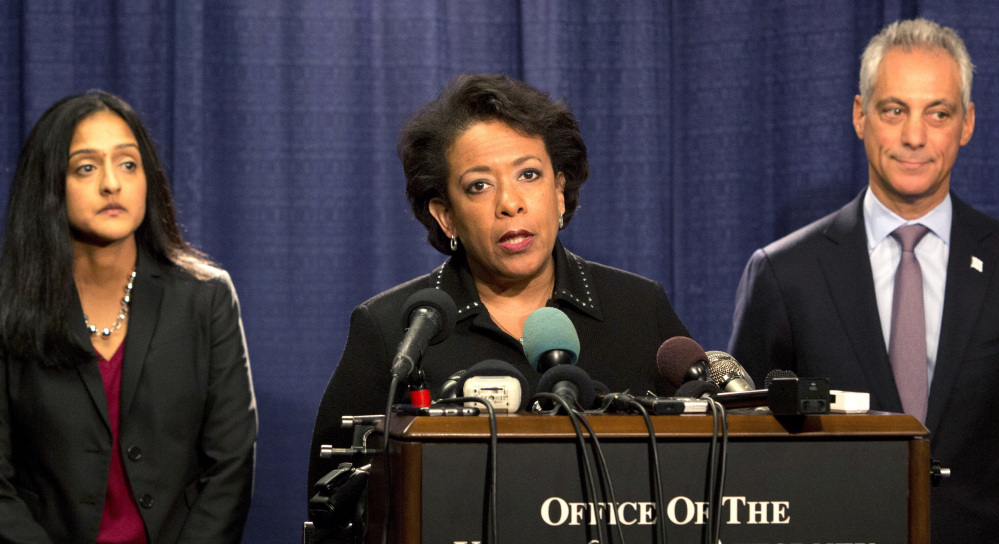CHICAGO — The Justice Department on Friday laid bare years of civil rights violations by Chicago police, blasting the nation’s second-largest department for using excessive force that included shooting at people who did not pose a threat and using stun guns on others only because they refused to follow commands.
The report was issued after a yearlong investigation sparked by the 2014 death of a black teenager who was shot 16 times by a white officer. The federal investigation looked broadly at policing and concluded that officers were not sufficiently trained or supported and that many who were accused of misconduct were rarely investigated or disciplined.
The findings come just a week before a change in administration that could reorder priorities at the Justice Department. Under President Obama, the government has conducted 25 civil rights investigations of police departments, including those in Cleveland, Baltimore and Seattle. President-elect Donald Trump’s position on the federal review process is unclear. His nominee for attorney general has expressed reservations about the system, especially the reliance on courts to bring about changes.
Asked about the investigation’s future, outgoing Attorney General Loretta Lynch said talks between Chicago and the government would go on regardless “of who is at the top of the Justice Department.”
The federal government’s recommendations follow an especially bloody year on Chicago streets. The city logged 762 homicides in 2016, the highest tally in 20 years and more than the combined total of the two largest U.S. cities – New York and Los Angeles.
The Chicago department, with 12,000 officers, has long had a reputation for brutality, particularly in minority communities. The most notorious example was Jon Burge, commander of a detective unit on the South Side. Burge and his men beat, suffocated and used electric shock for decades starting in the 1970s to get black men to confess to crimes they did not commit.
Chicago officers endangered civilians, caused avoidable injuries and deaths and eroded community trust that is “the cornerstone of public safety,” said Vanita Gupta, head of the Justice Department’s civil rights division.
The investigation began in December 2015 after the release of dashcam video showing the fatal shooting of 18-year-old Laquan McDonald, who was walking away from police holding a small folded knife. The video, which the city fought to keep secret, inspired large protests and cost the city’s police commissioner his job.
Send questions/comments to the editors.



Success. Please wait for the page to reload. If the page does not reload within 5 seconds, please refresh the page.
Enter your email and password to access comments.
Hi, to comment on stories you must . This profile is in addition to your subscription and website login.
Already have a commenting profile? .
Invalid username/password.
Please check your email to confirm and complete your registration.
Only subscribers are eligible to post comments. Please subscribe or login first for digital access. Here’s why.
Use the form below to reset your password. When you've submitted your account email, we will send an email with a reset code.